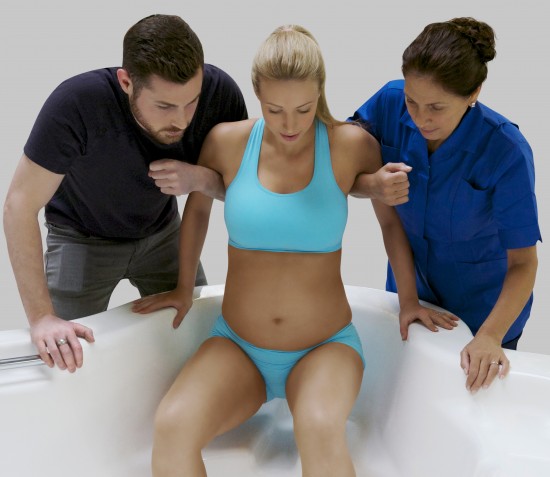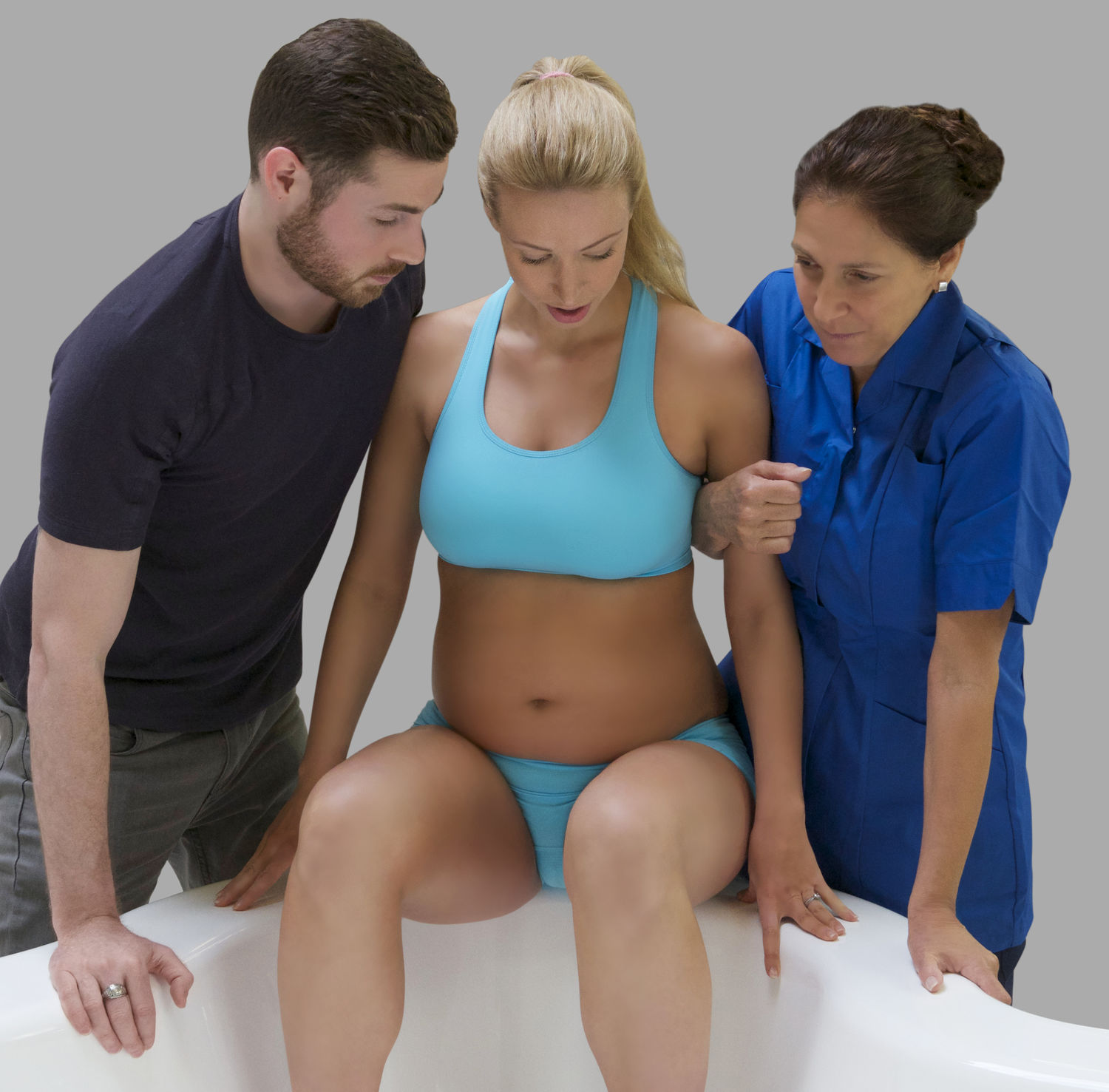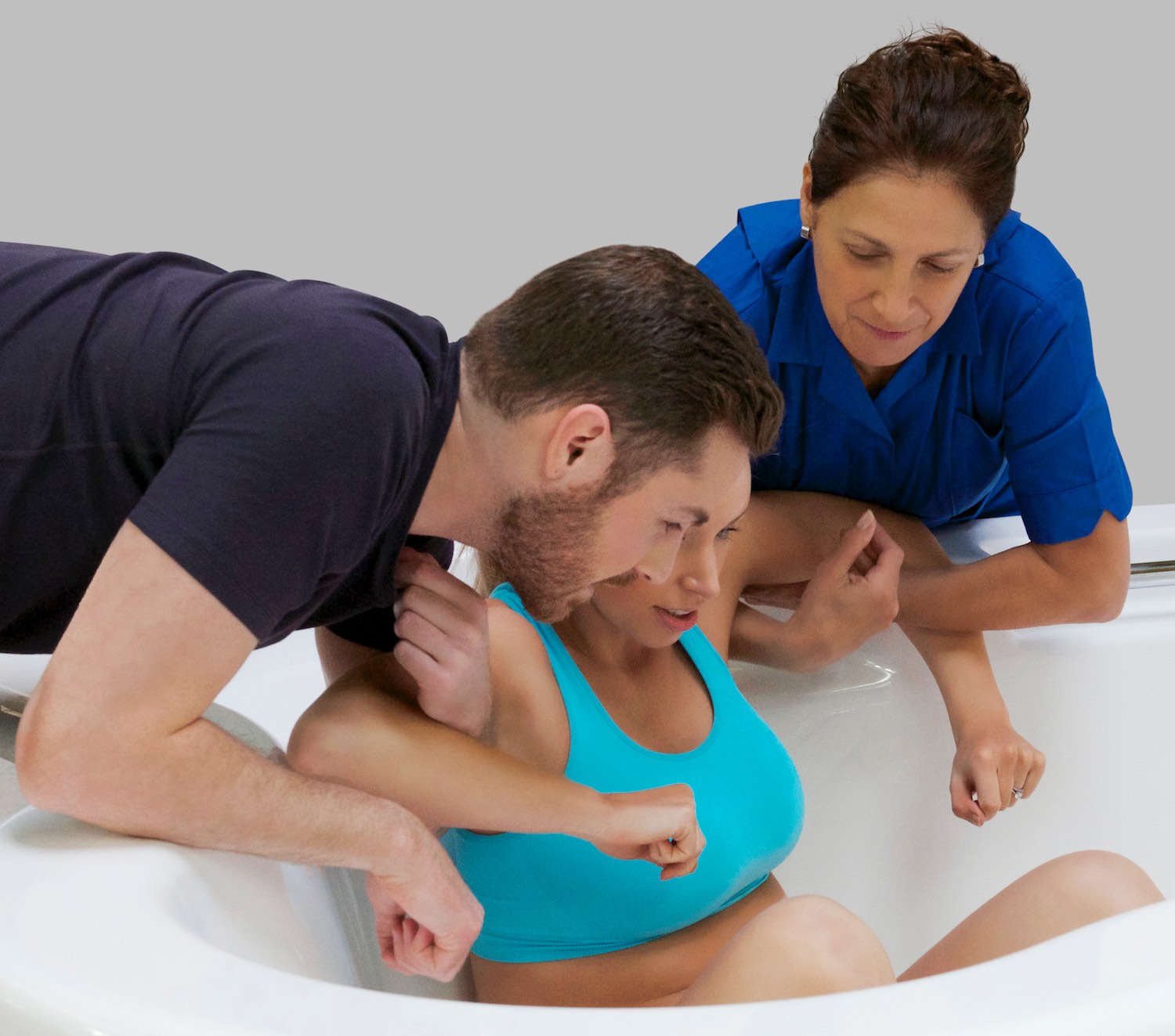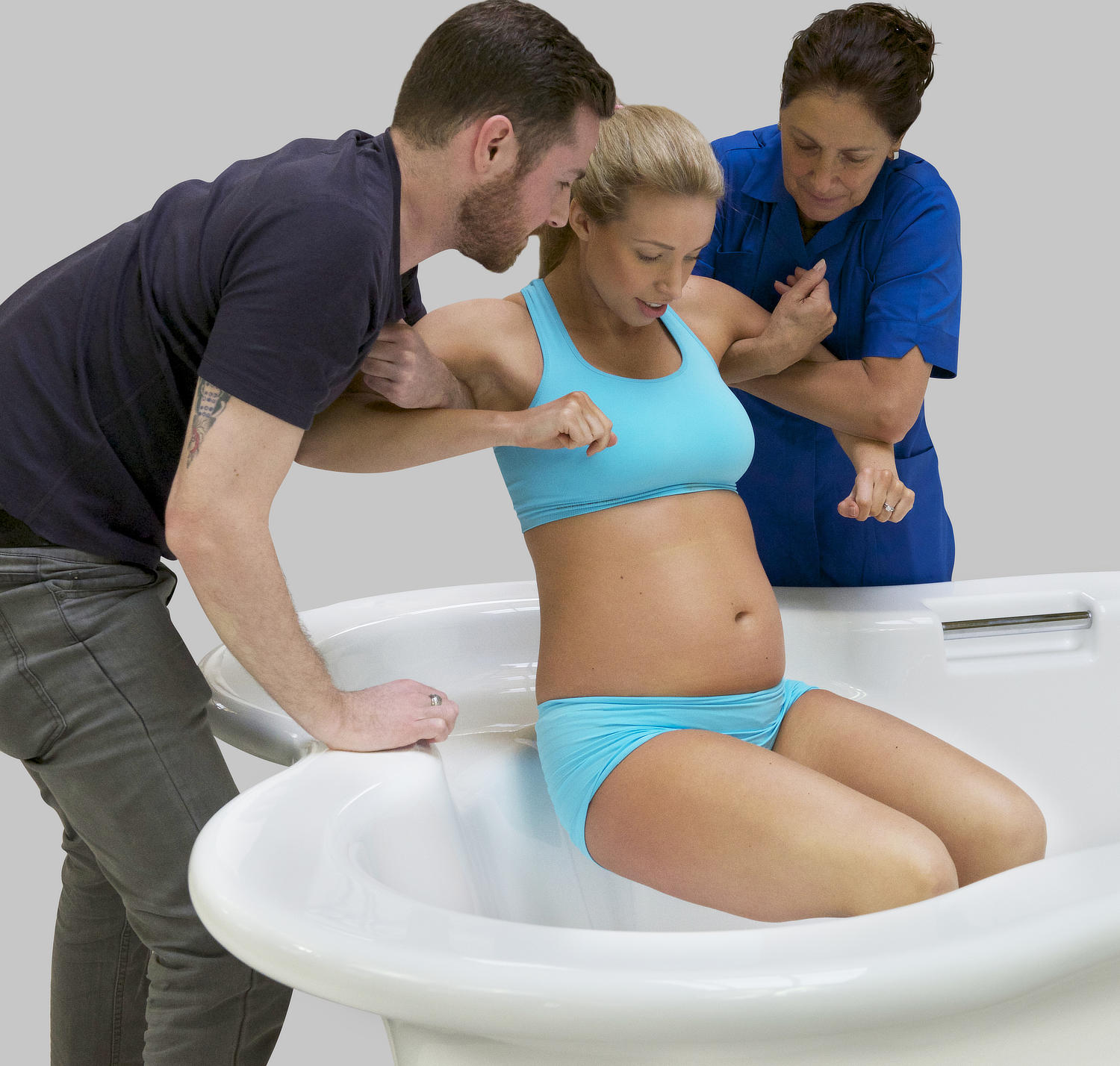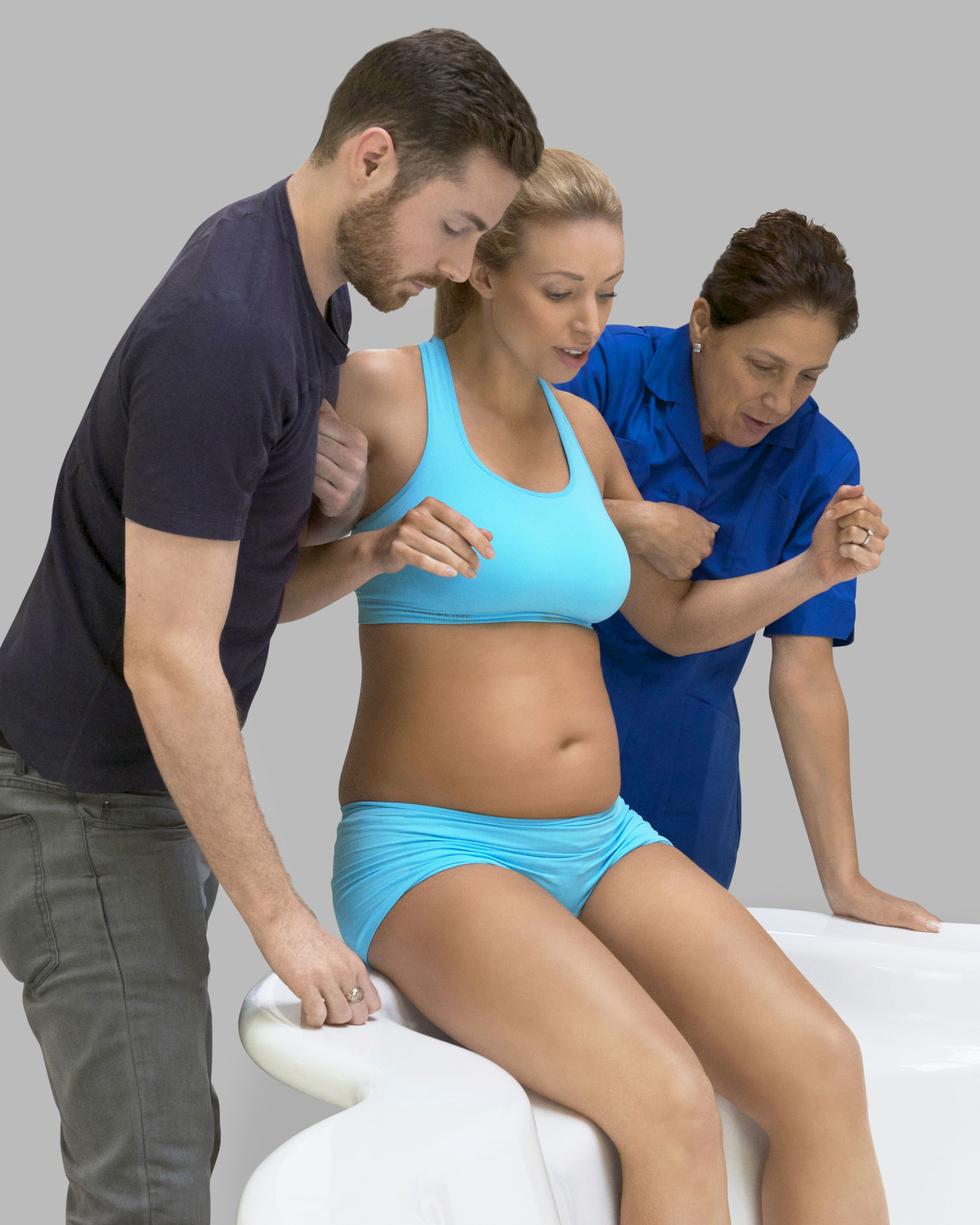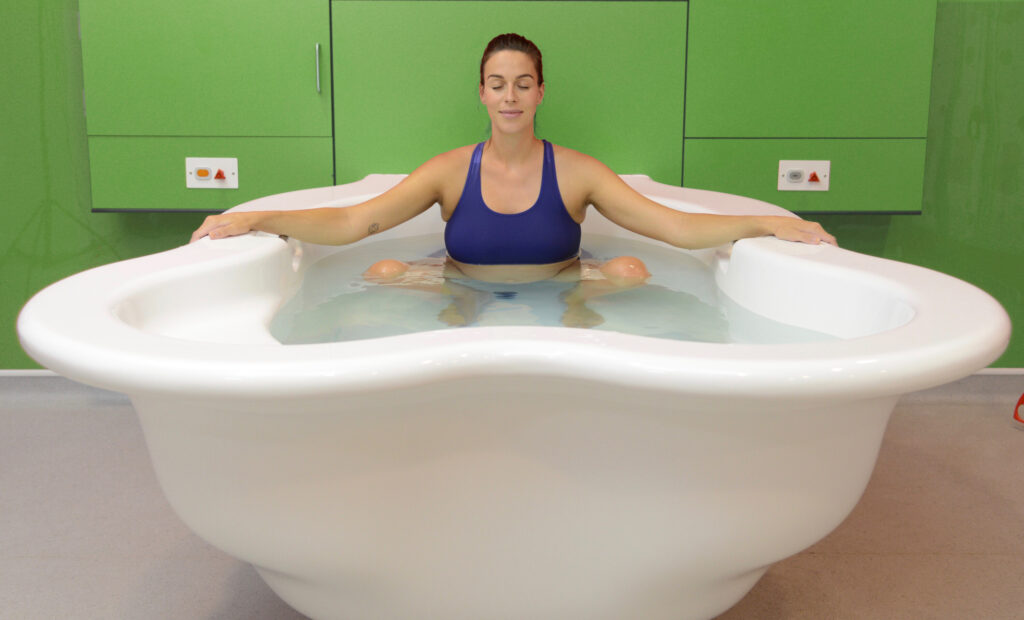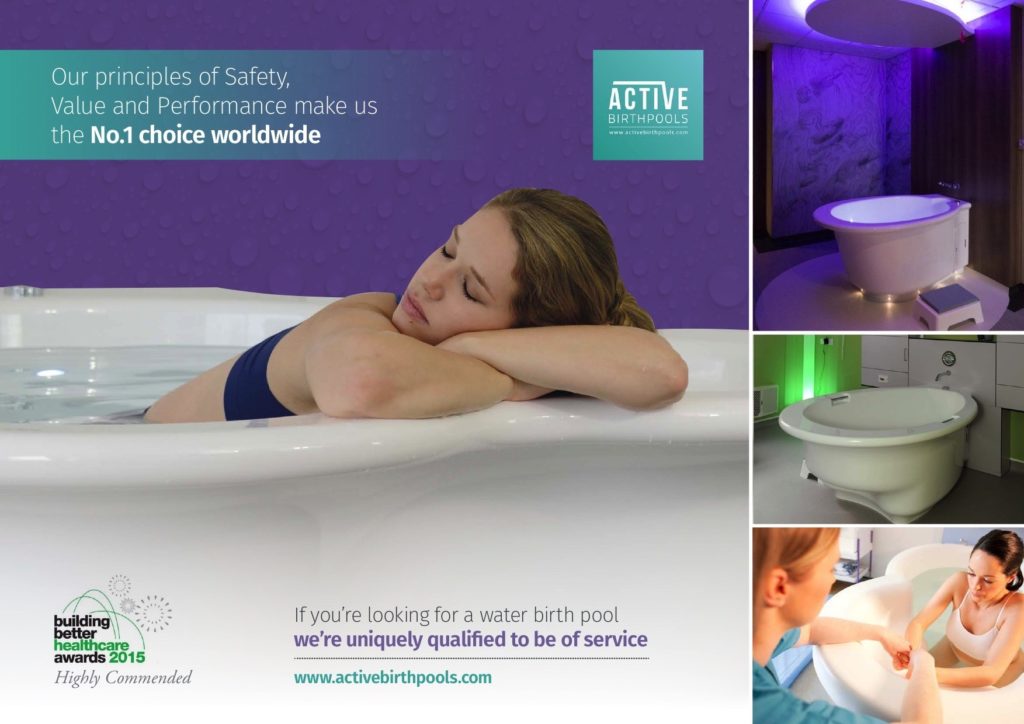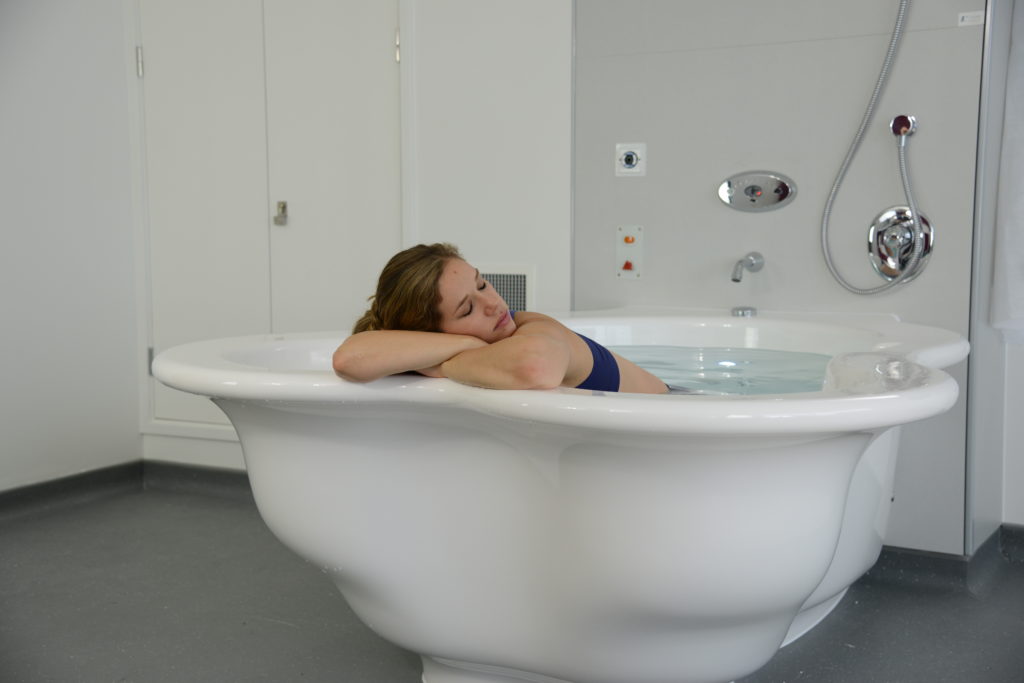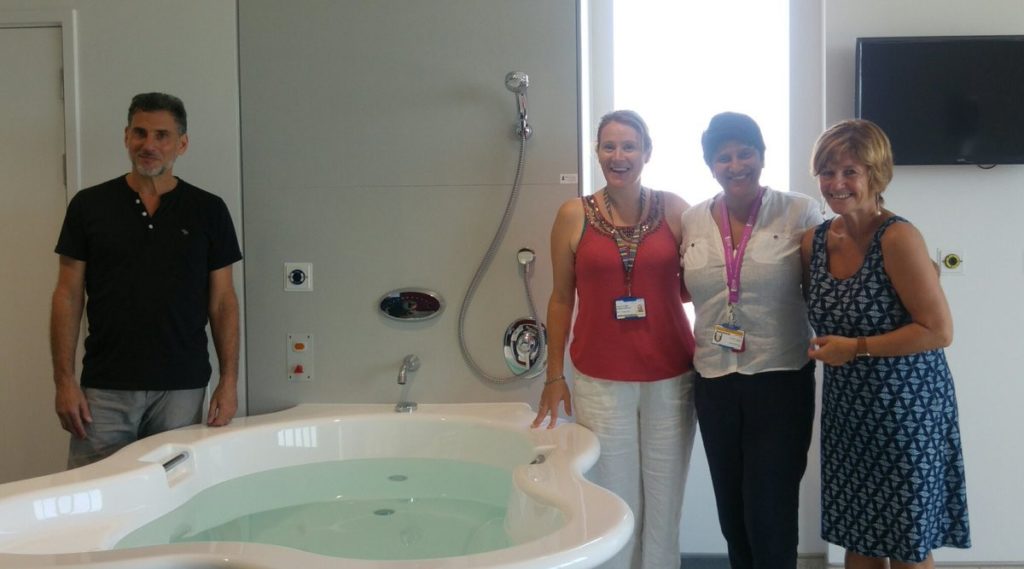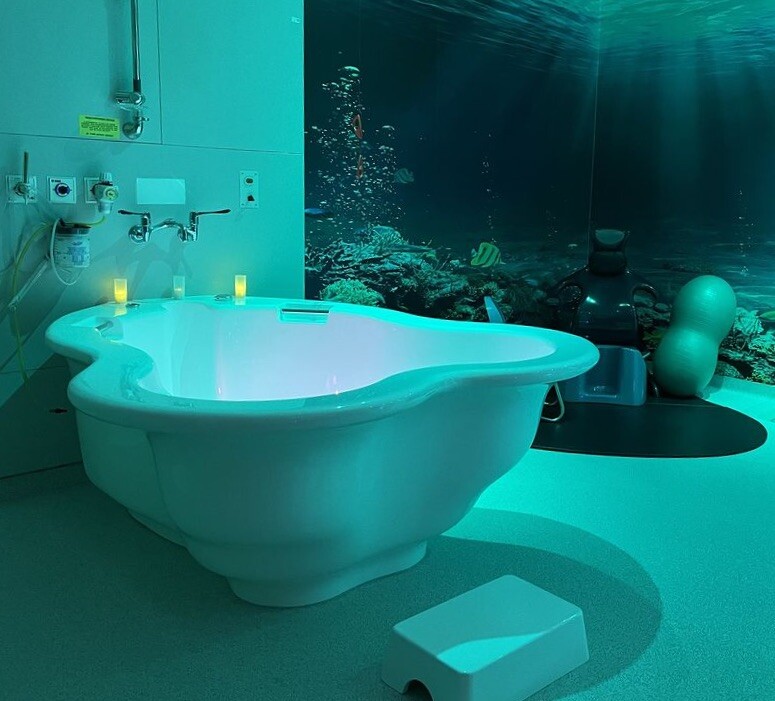Active Birth Pools give midwives safe, practical options for dealing with emergencies.
The evacuation a collapsed woman is potentially hazardous and poses risk of injury to mother and midwife.
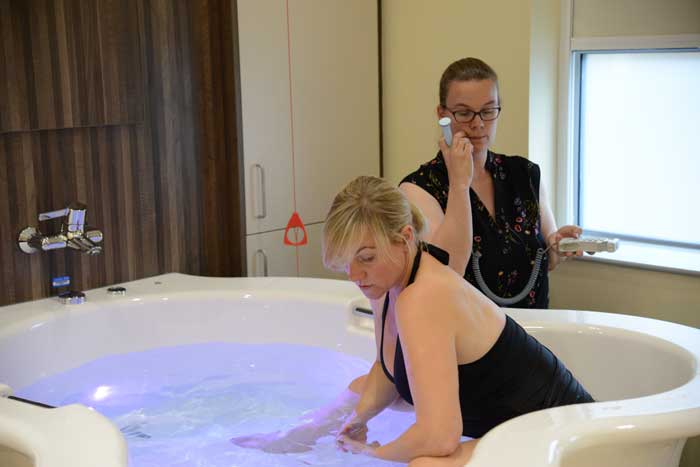
If the need for an emergency evacuation arises the midwife should:
- summon help
- stabilise the mother
- turn the taps on to raise the water to rim level.
The buoyancy of the water reduces the relative weight of the mother by approximately 33% making it easier to move her and effect safe evacuation.
Midwives should float/move the mother onto a seat or support and hold her safely until help arrives.
Basics:
- The mother should be screened to ensure that she meets the inclusion criteria prior to entering the birth pool.
- Continuous risk assessment is essential to reduce the incidence of emergencies in the pool.
- At the first sign of a contraindication the mother should be asked to get out of the water and assisted from the pool for monitoring and care.
- If the mother is unable to leave the pool under her own power or has collapsed an emergency evacuation will need to be conducted.
- A trolley should be available
- for the mother to be moved onto.
- Care must be taken that proper lifting techniques are employed to avert strain & injury.
Example 1: Emergency evacuation utilising the labour support seat
The mother has been moved onto and held on the labour support seat
The midwives guide the mother onto rim by sliding her up the side of the pool
Once on the rim she can be easily transferred onto a trolley
Example 2) Emergency evacuation utilising the safety seat
The mother is moved into position under the safety seat
The midwives glide her up the side of the pool
Onto the safety seat,
and then onto the rim for transfer onto the trolley
Active Birth Pools are portable hoist compatible
Manual Handling advisors may insist that women are evacuated from the birth pool with a hoist and that this facility is provided for.
Active Birth Pools are designed to accommodate a portable hoist should the need arise.
Clinical Guidelines – Royal Cornwall Hospital
Clinical Guidelines – Royal Worcester Hospital
Guideline for the Management of Women Requesting Immersion in Water – Norfolk and Norwich University Hospitals
Operational Policy and Clinical Guidelines – Abbey Birth Centre
Birthspace: An evidence-based guide to birth environment design – Queensland Centre for Mothers and Babies
Use of water for labour and birth – Hywel DDA Local health Board
Guidelines for use of pool during labour and delivery – East Cheshire NHS Trust
Guiding principles for midwifery care during normal labour – Barking, Havering and Redbridge NHS Trust
Waterbirth care during labour for low risk women – Sandwell and West Birmingham Hospitals


